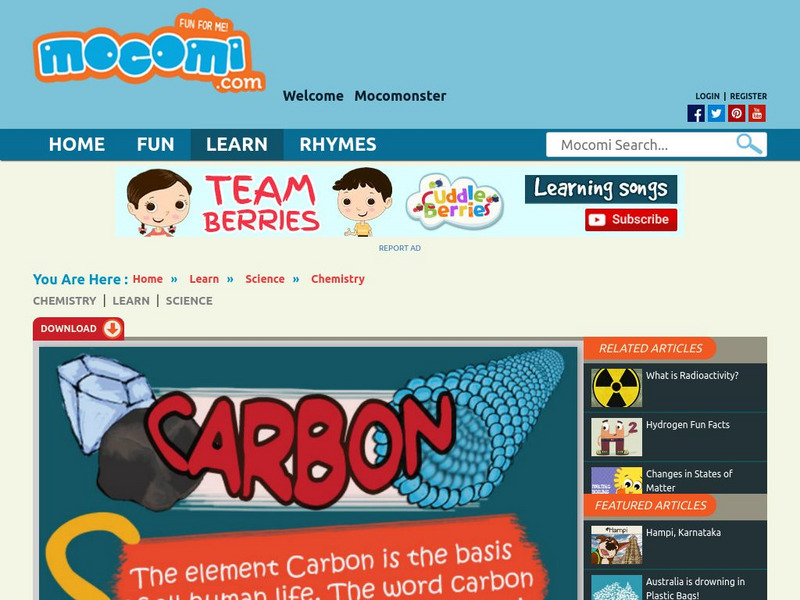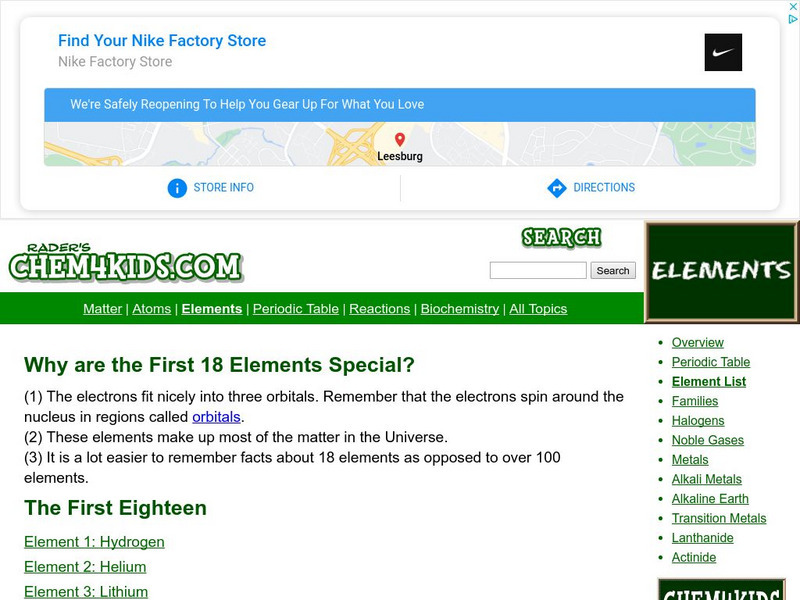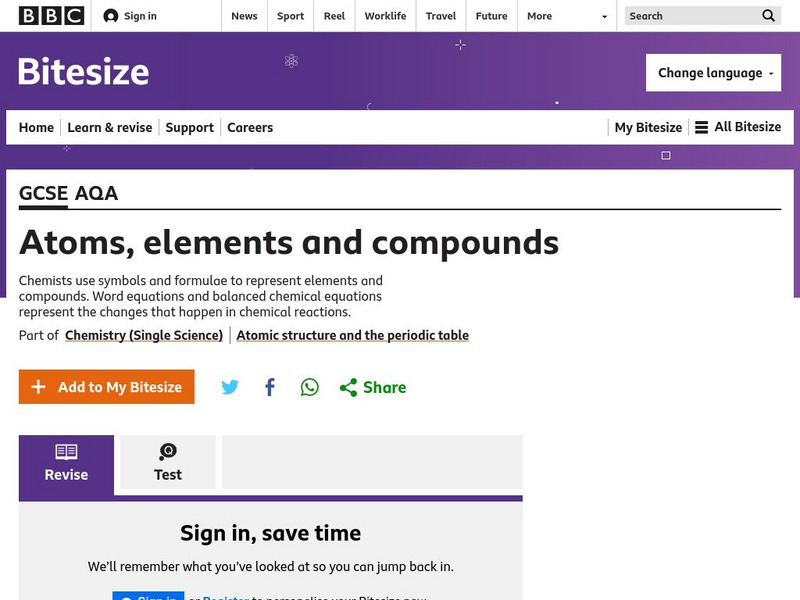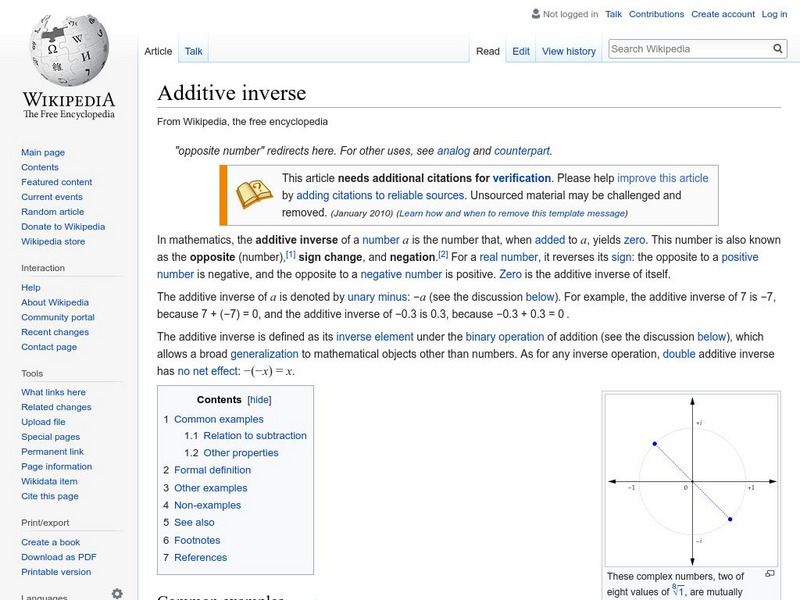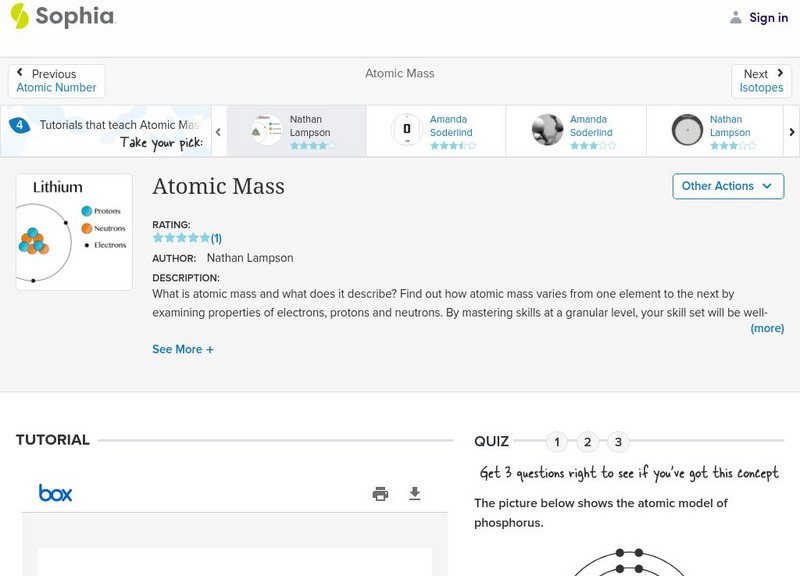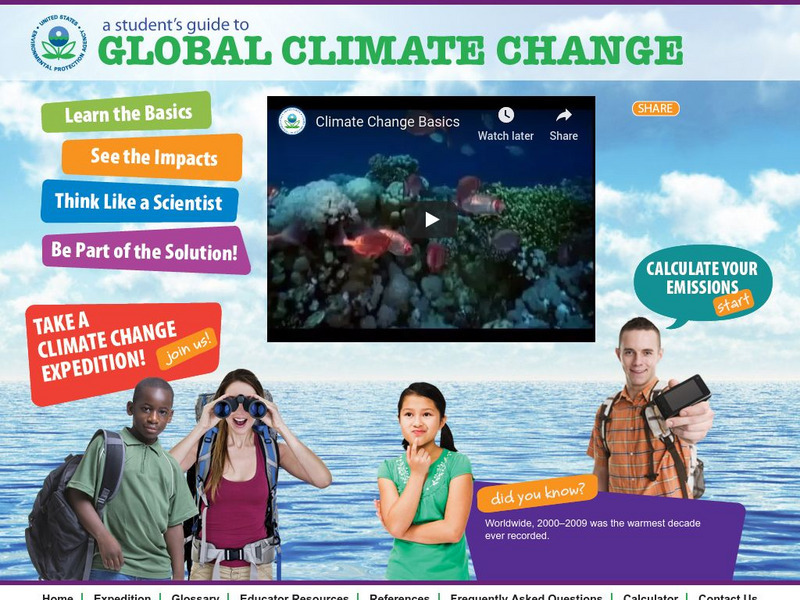Read Works
Read Works: What Is a Rock?
[Free Registration/Login Required] An informational text about the elements that rocks are made of. A question sheet is available to help students build skills in reading comprehension.
Mocomi & Anibrain Digital Technologies
Mocomi: What Is Carbon?
The element Carbon is the basis of all human life. Learn here about the discovery of Carbon and its function amongst all living things.
Columbia University
Asia for Educators: What Is a Waka?
This large, wonderful site includes so much information on Asia that it is hard to showcase each element. It is easiest to enter Waka into the keyword box in order to access all the provided information. You will find an essay that...
ClassFlow
Class Flow: What Is Matter?
[Free Registration/Login Required] Discover the composition of matter and the relationship between matter, atoms, and elements. Students will learn the differences between elements and compounds, and how molecules are formed. Chemical...
Georgia Department of Education
Ga Virtual Learning: Contemporary Literature: The Modern Short Story
This lesson is an introduction to the modern short story including defining the short story, how the modern short story differs from the classic short story, the elements of a short story, and what is to be expected in this unit.
Chem4kids
Chem4 Kids: Element List
Site provides the first 18 elements found in the Periodic Table. Click on an element to discover where it is found and what it's characteristics are.
BBC
Bbc: Gcse Bitesize: Atoms, Elements and Compounds
This lesson focuses on atoms and elements including what they are, the chemical symbols for elements, and the placement of elements on the periodic table. A link to a test is provided.
Other
Science Alive: Synthetic vs. Natural: What's the Difference?
Through this reading, students will learn that a substance's properties arise from its molecular structure, not from how it's made (i.e., synthesized by people or found in nature). There is no fundamental difference between natural and...
Other
News Lab: Elements of Great Storytelling
This is a great site for broadcast journalists; it focuses on the elements that make a story great. You can find tips on writing from some of the top people in the industry.
Frostburg State University
General Chemistry Online: Atoms, Elements, and Ions Faq
Get the skinny on all things frequently asked about isotopes, subatomic particles and atomic theory. Find out what a "dalton" is or the difference between Na+ and Na.
ClassFlow
Class Flow: What's a Madda U?
[Free Registration/Login Required] This lesson is an exploration of element, compound and mixture. These activities introduce or reinforce vocabulary.
Wikimedia
Wikipedia: Additive Inverse
What is additive inverse? It means "opposite." Find out more about this concept in this detailed definition with examples and links to related terms.
Georgetown University
Georgetown University: News Values
Learn the essential elements of every good news story from Gerald Lanson and Mitchell Stephens, authors of Writing and Reporting The News, who emphasize eleven judgments that journalism students should make when evaluating newsworthiness.
Concord Consortium
Concord Consortium: How Does an Object Become Charged?
Activity 1 in this module: What is the effect of changing the composition of an atom? Since all atoms contain protons, neutrons, and electrons, what makes one element different from another is examined.
Other
Fagan Finder: All About Rss
This page is about using RSS and Atom, from a non-technical standpoint.If you are interested in creating RSS feeds, see this RSS Workshop, or Atom for Publishers for Atom.
Concord Consortium
Concord Consortium: How Does an Object Become Charged?
This module develops atomic-level causal models to explain observations of electrostatic interactions via the following activities: Activity 1. What is the effect of changing the composition of an atom? Activity 2. How do objects become...
American Psychological Association
What Makes Kids Care?
Sometimes a site just has to be read - and parents - read this one! If a key element to ending senseless violence is teaching children to care about their fellow humans, this article gives some guidance on how to teach just that.
Music Education
Music Education: Introduction to Reading Music
A very simple explanation of the very basics of music reading. This is really good for the singer who wants to understand more about what is on the musical page. Not very advanced- very basic.
Sophia Learning
Sophia: Atomic Mass: Lesson 4
This lesson explains what is represented by the atomic mass, and how it varies from one element to the next. Module includes a slideshow and a quiz.
Centers for Disease Control and Prevention
Centers for Disease Control: Atsdr: Toxicological Profile for Plutonium
This article is designed to inform people of the health risks associated with plutonium. It explains how a person might be exposed to the element, and what the effects might be.
US Environmental Protection Agency
Epa: A Student's Guide to Global Climate Change
The signs of global climate change are becoming more and more evident. The EPA provides an excellent guide for students that acquaints them with the basic causes, effects on people and the environment, and solutions that they can engage...
New York Times
New York Times: Crossword Puzzle: Weather
The New York Times Learning Network has developed interactive and printable crossword puzzles. The theme of this one is weather.
AdLit
Ad lit.org: Reading (And Scaffolding) Narrative Texts
Students need to learn the purposes and methods of narration in order to understand the narrative framework and to eliminate frustration when they read. When students know the narrative elements, they can more easily follow the story...
Other
Spelling Police: Paradox
Informational site that provides the definition for and some examples of paradox.

